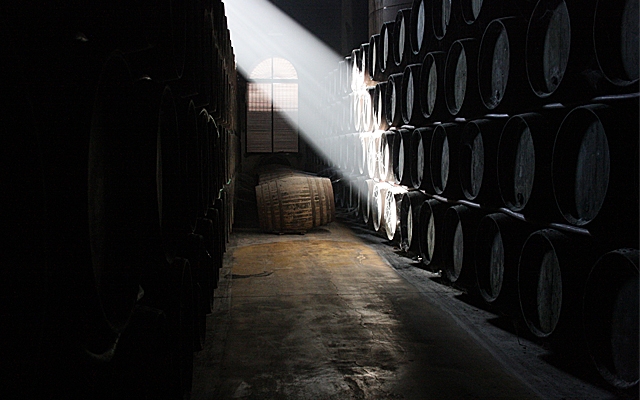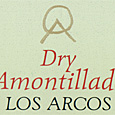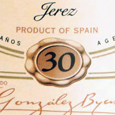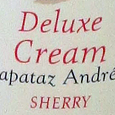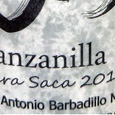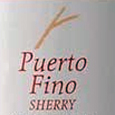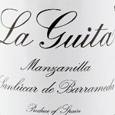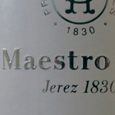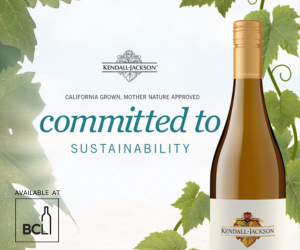If you haven't met Sherry, you’re overdue.
And in advance of the 4th annual International Sherry Week, November 6-12, we thought it would be an ideal time to introduce you to this classic Spanish drink via our weekly top ten.
If you’ve been holding out because you think it’s too sweet, too dry, too hard to understand, unfashionable or unrefined, give it up because Jerez-Xeres-Sherry is one of the most incredible and versatile wines (yes, it’s a wine) on the planet. Many consumers are terrified by sherry, and mortified by fortified wines in general (yes – it’s fortified). But there’s nothing at all to fear about Sherry – once you get to know it.
Sherry, though possibly new to you, is one of the world’s oldest wines. Its considerable evolution has been marked by the influence of many of the world's greatest civilizations: the Phoenicians, Greeks, Romans, Moors, Spanish and British, and is now firmly in the practiced hands of those in the know: sommeliers, bartenders and chefs. In the EU, "Sherry" is a protected designation of origin and all wine labeled as "Sherry" must legally come from the Sherry Triangle, an area in the South-western province of Cádiz between Jerez de la Frontera, Sanlúcar de Barrameda, and El Puerto de Santa María.
Production begins much like any other table wine; the grapes (mainly Palomino for the dry and mid-sweet styles, and Moscatel or Pedro Ximinez for the sweet styles) are harvested and undergo fermentation to dryness. Then, the process shifts and the wine is fortified with brandy, the amount of which will shape the final product. For light, dry styles, the wine is fortified to allow growth of beneficial yeasts, called flor. Flor blankets the wine in cask, preventing any oxygen contact. For fuller styles, the growth of flor is inhibited by a higher fortification, and wines are allowed oxygen exposure and maturity, like traditional wine. Once fortified, casks enter into the solera– a dynamic system of fractional blending - which sees new wine added to casks when older wine is drained away, allowing for the slow, steady and controlled blending of various years and lots. Sherry is aged for a minimum of 3 years in cask before it reaches the bottle, though some solera count back over decades.
From light, lithe and salty to rich, unctuous and sweet, the Sherry spectrum covers all bases and tastes, and is a secret weapon in pairing with foods. Allow us to introduce you to the many faces of Sherry.
MANZANILLA {man-zan-NEE-ya}
Delicate and bone dry, with yeast and green apple notes, this light sherry is produced exclusively in the coastal town of Sanlúcar de Barrameda, and picks up distinctive saline and saltiness from the marine environment.PAIRING: Like begets like. Seaside Manzanilla is the ideal partner for fish and shellfish – sardines in particular.
FINO {FEE-no}
Bone dry and crisp, with sharp aromas of almond, fresh bread, straw, tea leaves and wild herbs.PAIRING: This is the salty Spanish ideal for every pinxtos, or tapa. It is widely appreciated with the quintessentially Andalusian cured meats and Iberico pork, and fares very well with fish and shellfish. I love a chilled glass of fino with fresh cracked walnuts.
AMONTILLADO {a-mon-tee-ADD-doe}
An aged fino, from which the flor has died away after 6 years or so. Ambidextrous amontillado combines the anaerobic effects of flor (as in Fino and Manzanilla), with a later oxidative style (like Oloroso). The result is a gently earthy, pungent, hazelnut-clad, medium bodied wine.PAIRING: Due to its multifaceted process, the wines multitask extremely well with numerous dishes. Enjoy with aged, sharp cheeses like Parmigiano Reggiano or Pecorino. Poultry is devine (especially quail) and these wines’ earthiness also particularly likens them to mushroom and nut dishes, like mushroom risotto or chestnut soup.
OLOROSO {o-lo-ROESS-so}
Oloroso means scented, and these fragrant, wal-nutty wines deliver. This dry, structured wine is made in the presence of oxygen (without flor) and prime for maturing – the longer the aging period, the darker in hue and greater in complexity it becomes. Dried fruit, tobacco leaves, leather and toasted walnuts are characteristic. Can also be sweetened, and these caramel-marked styles identified by the name Medium, Golden, Milk, Rich or Brown. PAIRING: Break out the scented olorosos with the main course: thick pork chops is heavenly, though will suit any game meat or bird. For après, foie gras is a natural pair. Medium Oloroso can complement mild curries and Asian spices.
PALO CORTADO {PAOW-lo core-TAD-do}
In a similar vein to Amontillado, this wine ages under flor but shifts to oxidative aging when the flor dies off after 2-3 years. Palo Cortado are fuller bodied than an Amontillado because the flor effects have not been as lengthy. Bright mahogany in hue, with rich and smooth hazelnuts and bread on the palate. PAIRING: Poultry rules – especially birds with gamey, earthy flavours like quail and goose and the dark meat of turkey. Roasted hazelnuts also complement well, echoing the nutty notes in the wine.
PALE CREAM
A sweetened fino. Slightly biscuity with notes of coconut and delicate peach blossom over a lighter body and medium sweet palate. PAIRING: These are beauty as an aperitif or with brunch, chilled right down. Try with fresh tropical fruit, especially juicy mango.
CREAM
A sweetened amontillado or oloroso. Rich, full bodied, round, smooth and caramel sweet with gentle notes of apricot and rose petals. You may have heard of Harveys Bristol Cream? PAIRING: Of course you can pair with pastries, cakes and fresh fruit flan, but glazed ham is a daring and winning choice.
MOSCATEL {moss-cat-tell}
The fruity, perfumed Muscat grape often is used to sweeten other sherries, but the sundried grapes can also be used to make a stand-alone sweet wine, Pronounced golden raisins and caramelized sugar with a light balsamic fruit note, medium-full bodied with sweet, smooth texture. PAIRING: Sweet Chantilly cakes, and cream tarts work here, especially when bridged with raspberries or plums.
PEDRO XIMENEZ {pay-dro HE-men-eth}
PX, as it’s affectionately called, can lay claim to being one of the wines (some swear THE only) to pair with ice cream. This unique, thick wine is made from sundried grapes, resulting in a concentrated, luxuriantly rich and velvety specialty with dark caramel, dried figs and sultry spices. Very sweet.PAIRING: Brilliant drizzled on vanilla bean ice cream with fresh cracked black pepper. You can also break out the most potent blue cheeses or dark chocolate here – the bitterness can temper some of the intense sweetness of the wine.
If you remember nothing else, never forget your Sherry Pairing Crib Sheet:
If it swims drink Fino
If it flies drink Amontillado
If it runs drink Oloroso

 quicksearch
quicksearch

